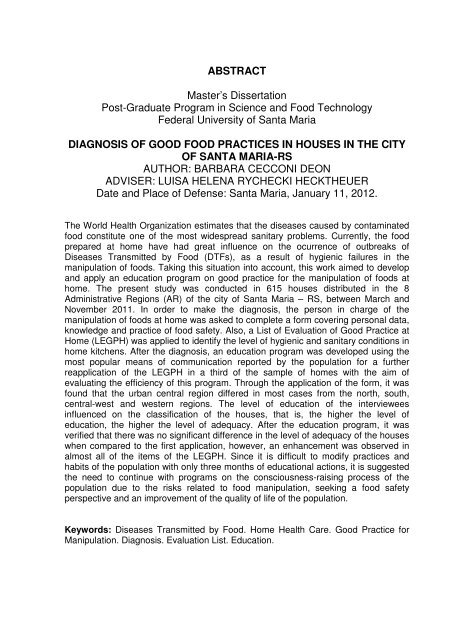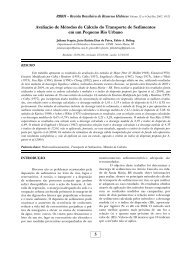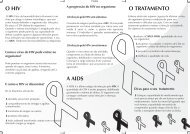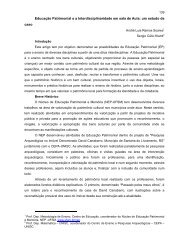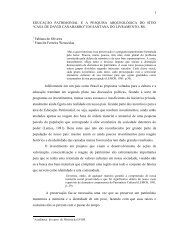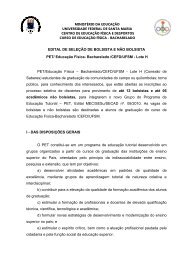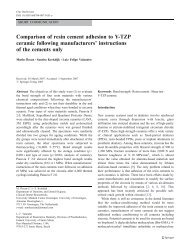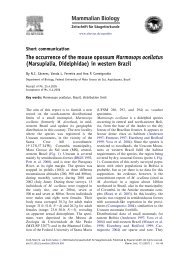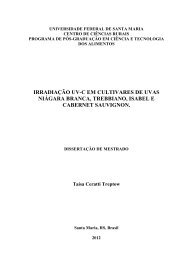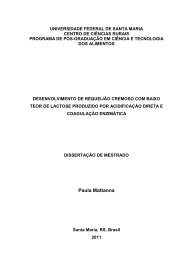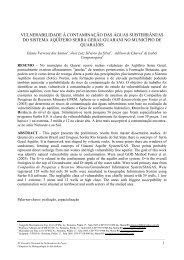Barbara Cecconi Deon - UFSM
Barbara Cecconi Deon - UFSM
Barbara Cecconi Deon - UFSM
You also want an ePaper? Increase the reach of your titles
YUMPU automatically turns print PDFs into web optimized ePapers that Google loves.
ABSTRACT<br />
Master’s Dissertation<br />
Post-Graduate Program in Science and Food Technology<br />
Federal University of Santa Maria<br />
DIAGNOSIS OF GOOD FOOD PRACTICES IN HOUSES IN THE CITY<br />
OF SANTA MARIA-RS<br />
AUTHOR: BARBARA CECCONI DEON<br />
ADVISER: LUISA HELENA RYCHECKI HECKTHEUER<br />
Date and Place of Defense: Santa Maria, January 11, 2012.<br />
The World Health Organization estimates that the diseases caused by contaminated<br />
food constitute one of the most widespread sanitary problems. Currently, the food<br />
prepared at home have had great influence on the ocurrence of outbreaks of<br />
Diseases Transmitted by Food (DTFs), as a result of hygienic failures in the<br />
manipulation of foods. Taking this situation into account, this work aimed to develop<br />
and apply an education program on good practice for the manipulation of foods at<br />
home. The present study was conducted in 615 houses distributed in the 8<br />
Administrative Regions (AR) of the city of Santa Maria – RS, between March and<br />
November 2011. In order to make the diagnosis, the person in charge of the<br />
manipulation of foods at home was asked to complete a form covering personal data,<br />
knowledge and practice of food safety. Also, a List of Evaluation of Good Practice at<br />
Home (LEGPH) was applied to identify the level of hygienic and sanitary conditions in<br />
home kitchens. After the diagnosis, an education program was developed using the<br />
most popular means of communication reported by the population for a further<br />
reapplication of the LEGPH in a third of the sample of homes with the aim of<br />
evaluating the efficiency of this program. Through the application of the form, it was<br />
found that the urban central region differed in most cases from the north, south,<br />
central-west and western regions. The level of education of the interviewees<br />
influenced on the classification of the houses, that is, the higher the level of<br />
education, the higher the level of adequacy. After the education program, it was<br />
verified that there was no significant difference in the level of adequacy of the houses<br />
when compared to the first application, however, an enhancement was observed in<br />
almost all of the items of the LEGPH. Since it is difficult to modify practices and<br />
habits of the population with only three months of educational actions, it is suggested<br />
the need to continue with programs on the consciousness-raising process of the<br />
population due to the risks related to food manipulation, seeking a food safety<br />
perspective and an improvement of the quality of life of the population.<br />
Keywords: Diseases Transmitted by Food. Home Health Care. Good Practice for<br />
Manipulation. Diagnosis. Evaluation List. Education.


